You are here
Filmography
Featuring well-known L.A. Rebellion works alongside rarely seen student films, this body of work represents not only the originality of the individuals whose names are on them, but a collective vision as well. Across the two decades during which they made their presence felt at UCLA, and in the decades since, individual L.A. Rebellion artists have focused on diverse topics and responded to evolving political and artistic thought through their work. Explorations of class, considerations of historical legacies, stories attentive to concerns of local communities and appreciations of other Black arts are only some of the areas of exploration. The films also display a diversity of forms, from irreverent reconfigurations of well-worn genre types, to groundbreaking experiments with cinematic language. Certain works, long out of circulation, represent rediscoveries and will certainly lead to much future scholarship.
Learn more about the UCLA Film & Television Archive’s ongoing “L.A. Rebellion” inititiative.
| Title | Year | |
|---|---|---|
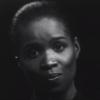 |
Grey Area An African-American woman reporter for a local television station who must seemingly compromise her political principles to keep her job, just as a former Black Panther Party member gets out of prison, only to realize that the old comrades in the struggle have moved on with their lives. |
1982 |
 |
Happy Valentine's Day Four women college students at Mt. Holyoke discuss their romances (lesbian and straight) with each other over the two days leading up to the Valentine’s Day mixer. Directed by Gay Abel-Bey. |
1980 |
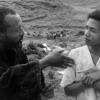 |
Harvest: 3,000 Years Haile Gerima’s first feature work set in Africa employs visions of his native Ethiopia to construct a post-colonial allegory of class exploitation. Depicting a peasant family toiling under a wealthy feudal landlord, the film blends numerous narrative techniques to create an impassioned work of haunting beauty. |
1976 |
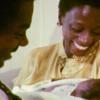 |
Hidden Memories Jacqueline Frazier’s first film confronts the issue of teenage pregnancy, remaining extremely ambiguous about all choices for young women, whether celibacy or sexual activity, abortions or marriage. |
1977 |
 |
Homeland When younger brother Louis learns of his acceptance into law school in the city, he demands that his half of the family farm be sold, despite the fact that his older brother, John, lives on the farm with his wife and child. The family must search for its identity and try to maintain its integrity in the face of this conflict. |
1988 |
 |
The Horse Charles Burnett employs a sparse lyricism in this haunting coming-of-age tale about an African American boy tending to a horse that is to be put down. |
1973 |
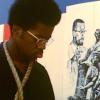 |
Hour Glass A young African-American man rethinks his role as a basketball player for the white establishment as he reads the works of Third World theoreticians, such as Franz Fanon, in Haile Gerima’s “Project One” film. |
1971 |
 |
I & I: An African Allegory Weaving experimental, dramatic and documentary styles, Ben Caldwell’s I & I is a moving meditation on reciprocity. |
1979 |
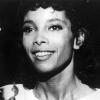 |
Illusions Set in Hollywood during World War II, Julie Dash's Illusions explores the nature of Hollywood fantasy and the illusion of racial identity. |
1982 |
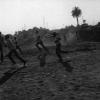 |
Killer of Sheep Charles Burnett’s captivating vision of 1970s Watts reveals a vibrant community living in the dusty lots, cramped houses and concrete jungles of South Los Angeles. The episodic narrative revolves around the emotional pressures faced by a factory worker; moments of humor and despair, mixed with evocative African American music, form a clear-eyed, compassionate portrait. |
1977 |
Pages
To report problems, broken links, or comment on the website, please contact support
Copyright © 2025 UCLA Film & Television Archive. All Rights Reserved






 Mobile Navigation
Mobile Navigation

